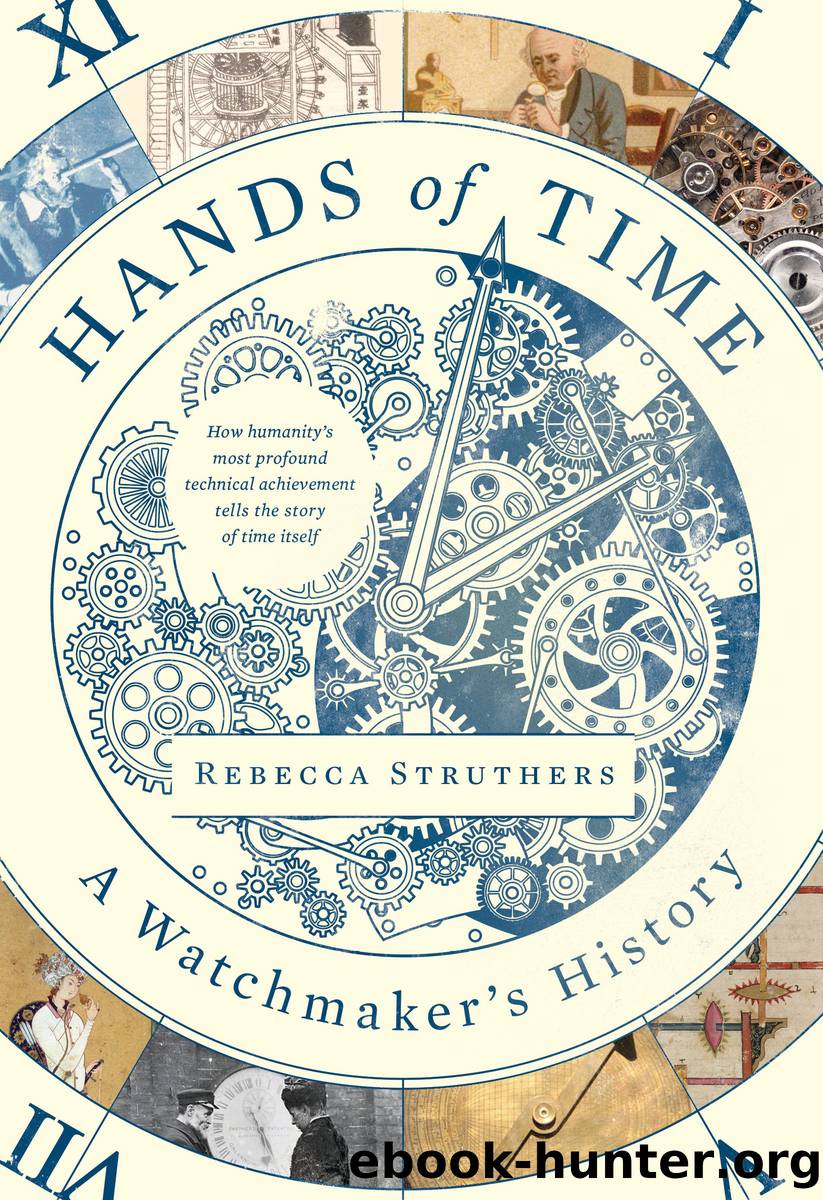Hands of Time by Rebecca Struthers

Author:Rebecca Struthers
Language: eng
Format: epub
Publisher: HarperCollins
Published: 2023-04-18T00:00:00+00:00
8
The Watch of Action
âI refused to take no for an answer.â
Bessie Coleman, aviator, 1920s
Some people just hate to be told something canât be done. Iâm one of them. I was the first person in my watchmaking class to tackle a verge watch precisely because my tutor thought it would be too advanced for me. In my final year, instead of a clock I decided to make a pendant watch in the form of a dragonfly. In 2011 I met George Daniels â the worldâs most famous living watchmaker. He wanted to know why I was working at an auction house and not making watches. Fair question, I thought. He asked whether I wanted to make my own watches some day; I said I did. He laughed loudly, and told me he looked forward to seeing them. It took more than ten years to meet Georgeâs challenge. Unfortunately, heâs no longer around to see what Iâm up to.
This trait goes way back. The first novel I ever read was a response to a similar gauntlet, when an unkind teacher (the type who would lock you in a store cupboard or rip up your work in front of the class because of a spelling mistake) told me I could never read Jules Verneâs Around the World in Eighty Days because it was too long and hard for me. I was eight, and up to that point had preferred science books to novels, but the story â which was full of daring and adventure â piqued my interest. Itâs ironic that Around the World, published in 1872, is itself the story of a wager: the unbelievable (at that time) idea that it might be possible to circumnavigate the globe in eighty days. Phileas Fogg was prepared to bet (and spend) his fortune defying his doubters as he travelled the world by boat, train, camel and sledge, accompanied by his trusty manservant Passepartout (desperately trying to keep on schedule with the aid of his great-grandfatherâs watch) and tracked by the doubting Detective Fix.
Phileas Foggâs wager wasnât actually that outlandish. The late-nineteenth-century world was, in some respects, considerably smaller than it had been at the start of the century. Since Richard Trevithick invented the first steam locomotive in 1804, railway fever had spread through Western nations, hurtling people and commodities from one place to another faster than ever before. Railways even shrank the vast nation of America â at least temporally. At the start of the century, it would have taken as long as three months for a single letter to be delivered from, say, New York to New Orleans, and then another three months for the reply to come back. By the 1850s, thanks to the railroad, the whole exchange took just two weeks. Improvements in steam-driven ships and the opening of shipping lanes and canals shortened marine voyages: by 1900, the journey from England to Australia took thirty-five to forty days instead of four months. Meanwhile, the arrival of telegraphs (invented by Samuel
Download
This site does not store any files on its server. We only index and link to content provided by other sites. Please contact the content providers to delete copyright contents if any and email us, we'll remove relevant links or contents immediately.
| American National Standards Institute (ANSI) Publications | Architecture |
| History | Measurements |
| Patents & Inventions | Research |
Whiskies Galore by Ian Buxton(41938)
Introduction to Aircraft Design (Cambridge Aerospace Series) by John P. Fielding(33092)
Small Unmanned Fixed-wing Aircraft Design by Andrew J. Keane Andras Sobester James P. Scanlan & András Sóbester & James P. Scanlan(32764)
Craft Beer for the Homebrewer by Michael Agnew(18196)
Turbulence by E. J. Noyes(7978)
The Complete Stick Figure Physics Tutorials by Allen Sarah(7338)
Kaplan MCAT General Chemistry Review by Kaplan(6900)
The Thirst by Nesbo Jo(6877)
Bad Blood by John Carreyrou(6583)
Modelling of Convective Heat and Mass Transfer in Rotating Flows by Igor V. Shevchuk(6406)
Learning SQL by Alan Beaulieu(6237)
Weapons of Math Destruction by Cathy O'Neil(6215)
Man-made Catastrophes and Risk Information Concealment by Dmitry Chernov & Didier Sornette(5956)
Digital Minimalism by Cal Newport;(5704)
Life 3.0: Being Human in the Age of Artificial Intelligence by Tegmark Max(5516)
iGen by Jean M. Twenge(5385)
Secrets of Antigravity Propulsion: Tesla, UFOs, and Classified Aerospace Technology by Ph.D. Paul A. Laviolette(5333)
Design of Trajectory Optimization Approach for Space Maneuver Vehicle Skip Entry Problems by Runqi Chai & Al Savvaris & Antonios Tsourdos & Senchun Chai(5037)
Pale Blue Dot by Carl Sagan(4953)
